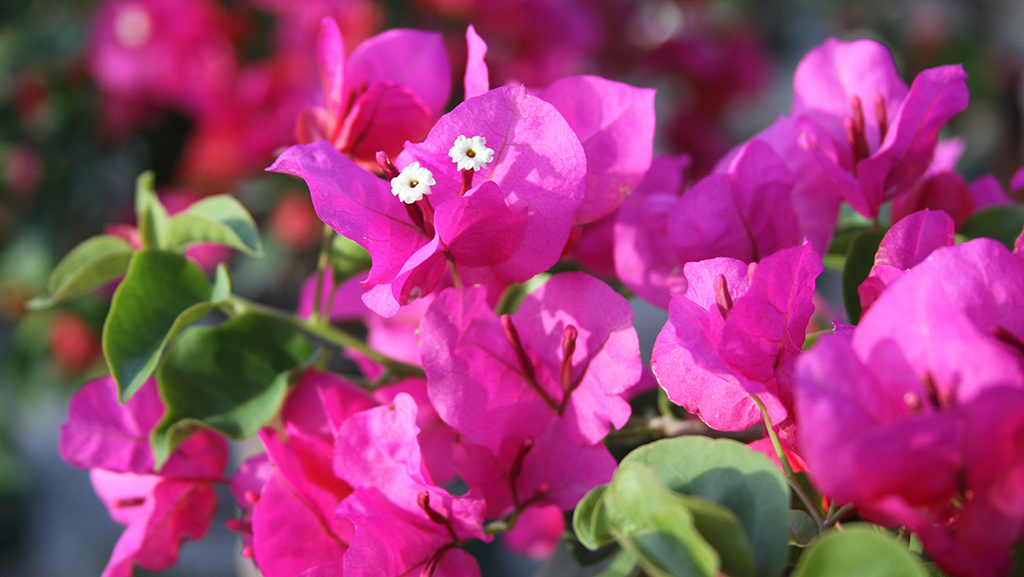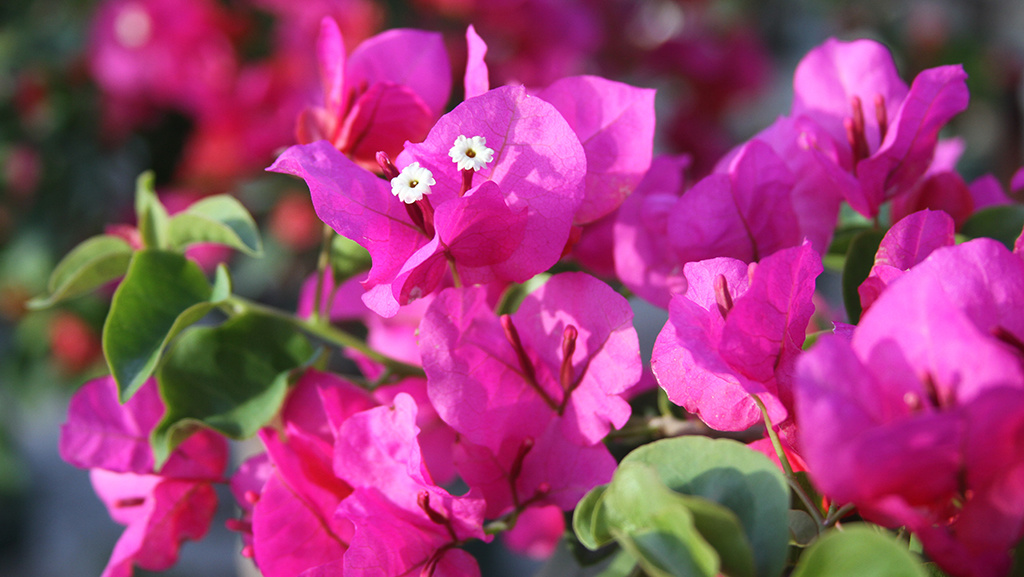Barbara Karst bougainvillea are known for their vibrant pinkish-purple blooms that add stunning pops of color to any garden. However, in order to keep your Barbara Karst thriving and flowering abundantly, choosing the right type of soil is crucial. The soil needs to provide the perfect balance of drainage and moisture retention to create an optimal growing environment. In this article, I’ll outline the key factors to consider when selecting the ideal soil for Barbara Karst bougainvillea.
The Importance of Well-Draining Soil
Well-draining soil is by far the most critical requirement for growing healthy Barbara Karst bougainvillea These plants do not tolerate soggy, waterlogged soil, which leads to root rot and other fungal diseases The soil should drain freely while still retaining some moisture. Sandy loam or loamy soils tend to offer the right balance. Adding organic compost improves drainage while increasing nutrient content.
You can also amend regular garden soil with perlite vermiculite or small gravel to improve drainage. If growing in pots always use containers with holes and a quality potting mix made for containers. Aim for a soil mix that drains easily but doesn’t dry out too rapidly. Proper drainage prevents damage to the roots and allows oxygen circulation.
Achieving the Optimal pH Range
Barbara Karst bougainvillea thrive best in slightly acidic soil with a pH of 5.5 to 6.0. This pH range allows the plant to easily uptake nutrients from the soil. Alkaline soils above 7.0 pH can prevent the plant from absorbing iron and other important minerals.
Test your soil’s pH and amend with sulfur or peat moss to lower pH. Adding composted manure or pine needles also acidifies soil gradually. For potting mix, you can blend in a bit of sphagnum peat to achieve an optimal pH level. Keep monitoring and modifying pH as needed.
The Importance of Nutrient-Rich Soil
While drainage is crucial, Barbara Karst bougainvillea also need nutrient-rich soil to support prolific flowering and strong growth. Choose a soil high in organic matter or mix in well-rotted compost when planting. You can also till in composted manure before planting.
Slow-release organic fertilizer mixed into the soil provides a steady feed of nutrients. For pots, choose a quality potting mix amended with fertilizer. Feed container plants monthly with a balanced liquid fertilizer during spring and summer. Rich, fertile soil fuels the vigorous growth required for abundant blooms.
Pay Attention to Sunlight and Air Circulation
When selecting a site, avoid low, poorly draining areas. Barbara Karst bougainvillea need at least 6 hours of direct sun daily. Allow space between plants for air to circulate freely. Proper sunlight and airflow reduces moisture on leaves, deterring fungal diseases.
Position container plants where they’ll get maximum sunlight. Having excellent drainage and amending soil with sand or perlite also improves aeration to the roots. Proper site selection and planting techniques prevent issues down the road.
Options for Soil Mix Components
Some key ingredients to consider when creating the ideal soil mix for Barbara Karst bougainvillea:
- Coarse sand or perlite for drainage
- Compost, peat moss or coir for moisture retention
- Worm castings, composted manure for nutrients
- Sphagnum peat moss to lower pH
- Pine bark fines, rice hulls or orchid bark to aerate soil
The right ratios of these components will provide the crucial blend of drainage, moisture, nutrients and pH for optimal growth.
Testing and Amending the Existing Soil
For in-ground plants, test your native soil first before amending or improving. A soil test helps determine texture, drainage, pH and nutrient levels. This allows you to tailor amendments to suit your specific soil.
To improve drainage, mix in organic material like compost. Blend in peat moss to enhance moisture retention or add perlite, vermiculite, small gravel or biochar. Boost nutrients with composted manure or organic fertilizer. Adjusting pH can be done gradually with the right amendments.
Common Potting Mixes for Bougainvillea
If using containers, you can avoid amending native soil entirely. Look for a quality commercial potting mix formulated for flowering plants, vegetables, cacti & succulents. Many mixes contain the right blend of drainage, moisture retention and nutrients.
You can also make a customized potting mix. A simple recipe is 1 part peat moss, 1 part perlite or vermiculite, and 1 part compost or composted manure. Mix in a slow-release granular fertilizer. Potting mixes allow you to control the soil environment.
Providing the right type of soil is key to growing vibrant, flowering Barbara Karst bougainvillea. Focus on creating adequate drainage to prevent root rot while still retaining moisture. Achieve a slightly acidic pH around 6.0. Boost nutrient content with plenty of organic matter. Pay attention to sunlight exposure and air circulation. With the perfect soil foundation, your Barbara Karst bougainvillea will thrive season after season.

Where to Plant Your Bougainvillea
Bougainvilleas health and blooming are directly influenced by the amount of sunlight it receives—it loves the sun! Ideally, they should get a minimum of 6 full hours of sunlight daily.
Also, consider planting bougainvillea in a spot that offers some protection from the wind (like near a wall or fence), as harsh winds can break its branches.
Bougainvillea needs well-draining soil to prevent root rot. And remember, depending on the variety, this plant can get pretty tall and sprawling. Choose a spot in your garden where bougainvillea can grow and thrive freely without crowding other plants.
Similarly, when planting a bougainvillea in a container, its crucial to select a pot with good drainage holes to prevent waterlogging. Use a well-draining potting mix and position the container in a sunny spot. Consider providing support or a trellis for the bougainvillea to climb.
Your Complete Bougainvillea Care Guide


Photos by Monrovia: Doreen Wynja
Prized for its tropical colors and vibrancy, bougainvillea is grown from coast to coast as a staple in all kinds of gardens. Sometimes called a “flowering machine,” bougainvillea is a fast grower that blooms in colors like red, pink, orange, and purple — although its blooms arent typical “flowers”.
The colorful blooms on bougainvillea are actually paper-like, modified leaves (called a bract) that contain bougainvilleas actual flowers, which are quite small, within. Bougainvillea flowers are the small, trumpet-shaped blooms of white and yellow held inside of the colorful bracts.
Bougainvillea is not only colorful, but its also a versatile, drought-tolerant plant, and pollinator-friendly plant. Sound like a good fit? Well tell you everything you need to know about adding bougainvillea to your landscape.
Bougainvilleas 101
FAQ
What is the best soil for bougainvillea?
What is the best potting mix for bougainvillea in pots?
What do you mix soil with for bougainvillea cuttings?
What kind of soil do bougainvilleas need?
Bougainvilleas have thin roots, making well-draining soil essential. Regular potting soil works well. Equal parts of sand and loamy soil also work well. Avoid using soil mixes that contain water-retaining components such as peat. A high level of peat in the soil mixture will promote root rot or fungal leaf spot.
When to plant Barbara karst bougainvillea?
Choosing the Right Time and Location: The best time to plant your Barbara Karst Bougainvillea is in spring or early summer after the danger of frost has passed. Select a location that receives full sun, ideally at least 6-8 hours of direct sunlight daily. Bougainvillea thrives in warm temperatures. Ensure the planting site has well-draining soil.
Is Barbara karst Bougainvillea a perennial?
Yes, the Barbara Karst Bougainvillea is indeed a perennial, and that’s one of the reasons I love it so much. It comes back year after year with its stunning, vibrant red blooms. It’s a joy to see it flourish through the seasons, especially when many other plants have finished their blooming period.
Does Barbara karst bougainvillea need a trellis?
Barbara Karst Bougainvillea is a vigorous vine and will benefit from some form of support to climb and showcase its blooms. You can install a trellis, fence, or other climbing structure near the planting site. Additional Tips: You can amend the planting area with some compost or organic matter to improve drainage and provide initial nutrients.
